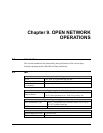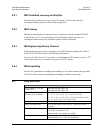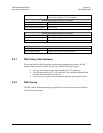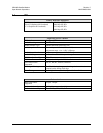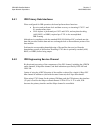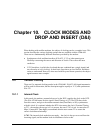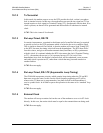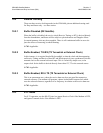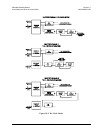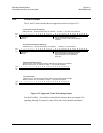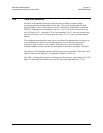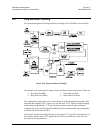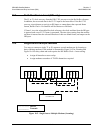
CDM-600 Satellite Modem Revision 7
Clock Modes and Drop and Insert (D&I) MN/CDM600.IOM
10–3
10.2 Receive Clocking
There are three receive clocking modes in the CDM-600, plus an additional setting used
for Drop and Insert only – see later section.
10.2.1 Buffer Disabled (RX Satellite)
When the buffer is disabled, the receive clock (Receive Timing, or RT) is derived directly
from the demodulator, and hence will be subject to plesiochronous and Doppler offsets.
In certain instances, this may be acceptable. There is still a minimum buffer in use to de-
jitter the effects of removing overhead framing.
G.703: Applicable.
10.2.2 Buffer Enabled, TX=RX (TX Terrestrial or External Clock)
In this instance, it is required that buffer be enabled, so that the clock and data appearing
on Receive Timing and Receive Data (RT and RD respectively) are synchronous with the
transmit clock or the external reference input. This is a relatively simple case, as the
output clock for the buffer is derived directly from either ST, TT or the external source.
G.703: Applicable.
10.2.3 Buffer Enabled, RX<>TX (TX Terrestrial or External Clock)
This is an uncommon case, where the receive data rate does not equal the transmit or
external reference. The modem will generate a phase-locked buffer output clock which
uses the selected reference, regardless of its frequency in relation to the receive data rate.
G.703: Applicable.
10.3 X.21 Notes
For X.21 operation, use the RS-422 pins, but ignore Receive Clock if the Modem is DTE,
and ignore Transmit clocks if the Modem is DCE.



